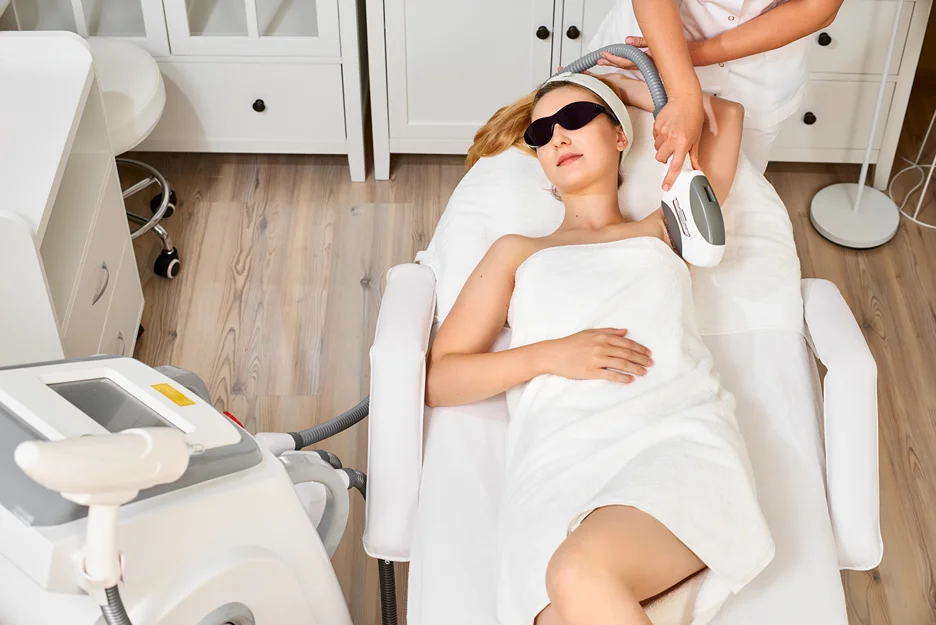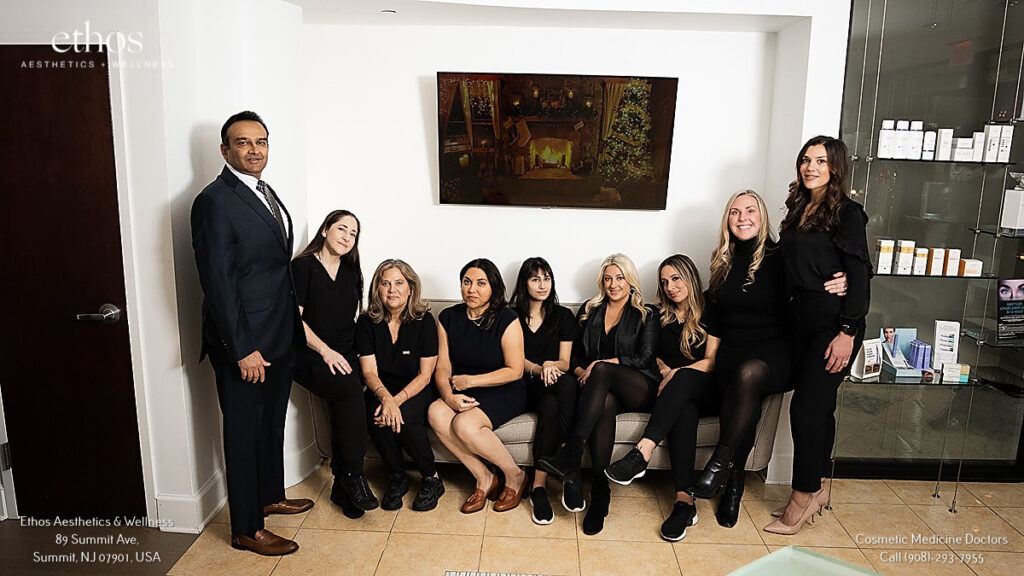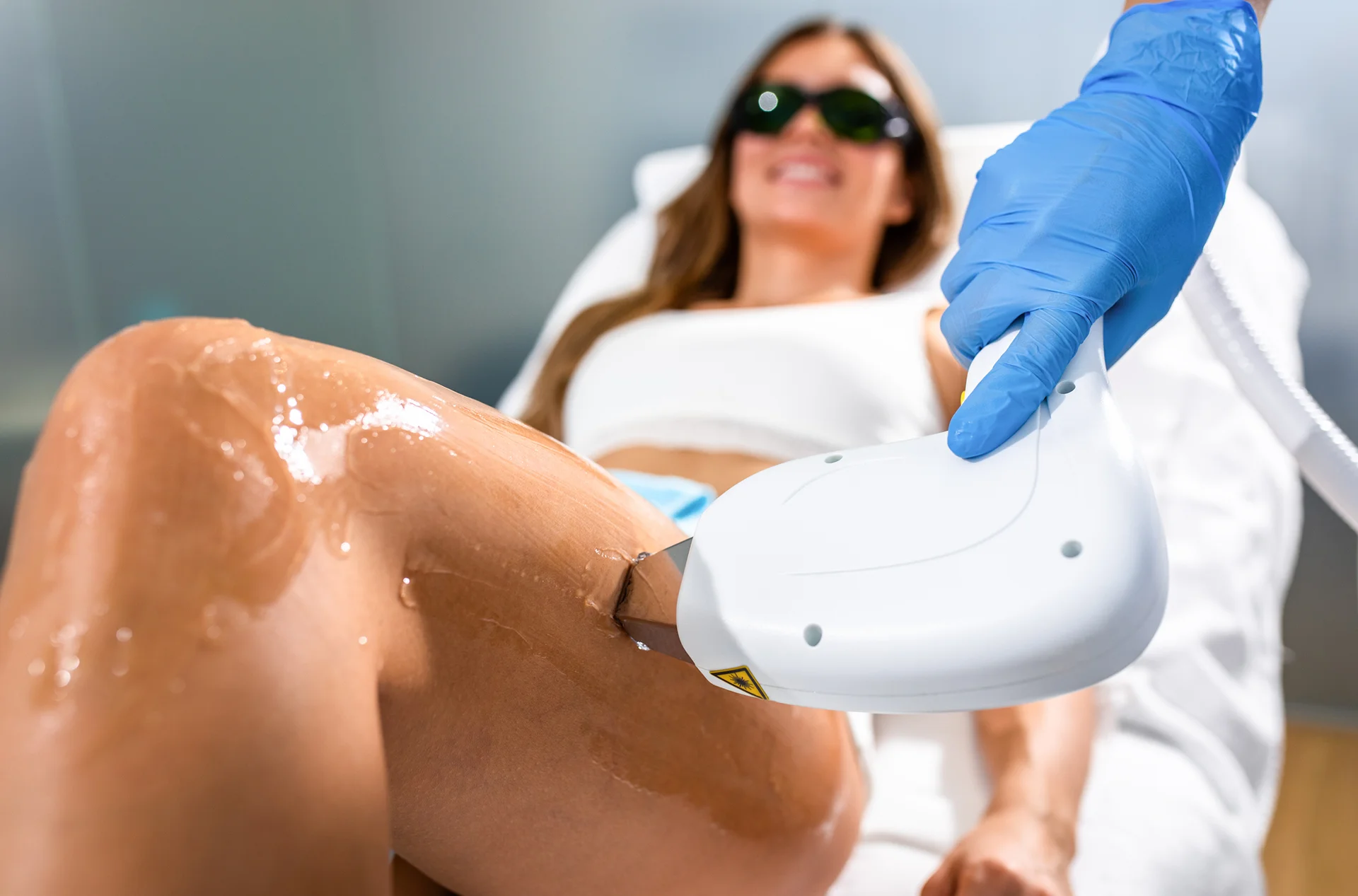While laser hair removal can produce transformative results, it’s important to understand proper aftercare, especially when it comes to sun exposure. The skin is highly sensitive post-treatment, making it more susceptible to sun damage. Being informed on how to protect your skin and minimize risks is key for safe and effective laser hair removal.
This guide will explore everything you need to know about sun exposure after laser hair treatments, from understanding how the technology works to expert tips for optimal results.
By learning how to care for your skin, you can fully reap the long-term rewards of this exciting hair removal method.
Understanding Laser Hair Removal
Laser hair removal uses concentrated beams of pulsating light to target hair follicles and hinder future growth. The light energy is absorbed by the pigment in the hair, damaging the follicle so it can no longer produce hair.
Melanin provides color and pigment to hair. The more melanin in the hair, the better the results typically achieved through laser hair removal. That’s why the treatment is most effective for those with dark hair and fair skin. The laser can easily target the dark pigment in the hair against the pale skin.
For those with lighter hair colors, the melanin concentration isn’t enough for the laser to effectively damage the hair follicle. And for darker skin tones, the laser struggles to differentiate between the melanin in the hair versus the higher melanin in the skin, making it riskier.
The skin type and sensitivity must always be assessed before undergoing laser hair removal. A patch test is often conducted to determine skin reaction. Finding an experienced technician who understands your unique skin health and tone is key for safe, customized treatment.
The Risks of Sun Exposure After Treatment

One of the most critical precautions post-laser hair removal is limiting sun exposure. The highly concentrated light beam essentially wounds the skin, making it extra sensitive. The treated areas are more prone to sunburn, skin damage, and hyperpigmentation.
Direct sunlight and UV rays can be harmful to skin healing after laser hair removal procedures. Excessive heat and radiation can lead to burns, irritation, and swelling of the treated areas. Sun exposure can even potentially trigger new acne breakouts.
In addition to short-term skin damage, sun exposure can affect the results of laser hair removal treatment. It may interfere with the hair growth cycle, stimulating new growth rather than stunting it. The sun can even spark growth of finer hair known as vellus hair in treated areas.
The dangers posed by the sun extend beyond surface-level burns. UV radiation greatly raises risks of skin cancer, especially on sensitive post-treatment skin. Seeking shade during peak sunlight hours is crucial for those who’ve undergone laser hair removal sessions.
Protecting Your Skin Post-Treatment
To shield skin after laser hair removal, diligent sun protection is a must. The application of broad-spectrum sunscreen with an SPF of at least 30 is highly recommended. Reapply sunscreen every two hours when outdoors.
For the most comprehensive UV protection, choose a broad protection sunscreen to safeguard against UVA and UVB rays. Mineral makeup with zinc oxide also provides an extra layer of defense for sensitive complexions.
In addition to sunscreen, covering up treated areas helps prevent sun damage. Wear wide-brimmed hats and clothing that minimizes skin exposure when going outside during peak sunlight hours. Seek shade whenever possible.
It’s also wise to avoid activities that may irritate the skin like hot baths, saunas, body scrubs, and harsh topical products. Keep the complexion calm and cared for with a soothing moisturizer free of irritants. Avoid picking or scratching the treated areas as they heal.
Expert Tips for a Safe and Effective Laser Hair Removal Journey
To prepare for laser hair removal sessions, allow skin to return to its natural un-tanned color. Never undergo treatment on recent sun-exposed skin – a good aesthetician will not treat overly tanned skin. They may prescribe a lightening cream to gradually fade the tan over time.
Before your first laser session, a patch test is often conducted to assess skin reaction to the laser. The technician will look for any potential adverse effects before clearing larger areas for treatment. Be sure to voice any concerns or questions.
During your laser hair removal journey, keep skin well-moisturized but avoid very oily products. Dry skin is prone to sensitivity and irritation. But acne-prone complexions may flare up with heavier creams. Find a gentle, non-comedogenic moisturizer for your skin type.
Laser technicians understand how to tailor treatments for all different skin tones from fair to darker skin types. With the newest hair removal devices, all skin colors can benefit. But be sure to go to an experienced, reputable laser skin care clinic for the best results.
Seeking a consultation at facilities like Ethos Aesthetics + Wellness allows you to learn more about the ideal treatment plan for your unique skin and hair removal goals. Their expert staff provides advice for before and after care for protected, beautiful skin.
Common Misconceptions and Myths
One of the biggest misconceptions about laser hair removal is that you can immediately hit the beach or tanning bed afterwards. But sun exposure should always be avoided for at least two weeks post-treatment. Direct sunlight can cause severe burns and hyperpigmentation on treated skin.
There is also a myth that laser hair removal involves painful zapping beams and bolts of energy. In reality, laser devices use concentrated light technology. With proper settings and an experienced technician, the procedure is far less drastic. Discomfort is minimal with modern hair removal lasers.
Some worry about potential eye injuries from laser devices. But reputable technicians are specially trained on usage of lasers in a precise, controlled manner. With laser eye shields and safety protocols, accidental exposure is extremely rare in medical settings.
The Long-Term Benefits of Laser Hair Removal
While traditional hair removal like shaving and waxing provide only temporary results, laser hair removal offers more permanent reduction in hair growth. Most patients see long-lasting results after an initial series of sessions.
Laser hair removal can provide several long-term benefits:
- Low maintenance: After completing the recommended number of laser treatments, patients can enjoy smooth hair-free skin for months or years before needing a touch-up session. Only periodic maintenance is needed, unlike shaving or waxing which requires daily or weekly upkeep.
- Minimal side effects: Laser targets dark pigment in hair follicles without damaging surrounding skin, so side effects like pain, redness and swelling are mild and temporary when proper settings and candidate criteria are used. Avoiding sun exposure and tanning helps prevent complications.
- Quick treatment: Each laser pulse takes just a fraction of a second, so small areas like upper lips or underarms can be treated in minutes. Larger areas may take 15-30 minutes per session. It’s much faster than electrolysis.
- Eliminates ingrown hairs: The laser disables hair follicles, preventing regrowth that gets trapped under skin and causes ingrown hairs. People prone to ingrown can experience significant reduction.
- Long-lasting smooth skin: After the 6-8 treatment course, patients enjoy months or even years of hair reduction before hair starts growing back thinner and lighter. Smooth skin can be maintained with occasional touch-ups, but results last much longer than shaving or waxing.
Conclusion
Laser hair removal can provide immense satisfaction when properly performed and cared for afterwards. Avoiding sun exposure is critical for results and skin health post-treatment. Always apply ample sunscreen, cover up, and seek shade after your sessions. With diligent aftercare, laser hair removal can reveal smooth, stubble-free skin that feels silky and refreshed. Look and feel your best by prioritizing your skin’s needs before and after this transformative treatment.
At Ethos Aesthetics + Wellness, our expert team ensures your laser hair removal journey is comfortable and effective. For more information on available treatments, schedule a consultation with our experts. Reveal your most confident skin and call Ethos Spa today!
Frequently Asked Questions

Q1: How long should I avoid sun exposure after laser hair removal?
You should avoid direct sun exposure and tanning for about 2 weeks after laser hair removal treatments. This gives your treated skin time to heal properly. Even if your skin doesn’t look visibly tan, it is still being exposed to UV radiation that can interact with laser-treated areas. Stay vigilant about sun protection during the healing period.
Q2: Can I take a hot shower after laser hair removal?
If your skin is irritated or red after laser hair removal, avoid hot showers, exercise, saunas, or anything else that could exacerbate the inflammation. If your skin is not bothered, a warm shower is fine. Be very gentle cleansing or touching the treated area. Keep showers brief, lukewarm if possible, and use gentle unscented soaps. Pat dry instead of rubbing.
Q3: How often can I have laser hair removal treatments?
Your dermatologist will advise on the optimal treatment schedule based on the area being treated and your individual hair growth cycle. Typically, sessions are spaced 4-6 weeks apart. Legs may require 6-8 sessions, while the bikini area may need 8-12 sessions. Maintenance sessions may be needed 1-2 times per year. Follow your clinician’s recommendations.
Q4: Who should perform laser hair removal treatments?
Laser hair removal requires expertise. See a board-certified dermatologist who specializes in laser treatments. Their medical training and experience with skin and lasers help ensure safe, effective treatments. Avoid discounted clinics with inexperienced staff. The risks are too high. Protect yourself by choosing a reputable dermatology practice.
Q5: Can laser hair removal be performed on any area of the body?
Laser hair removal can be effective on most areas of the body. However, results depend on your specific hair and skin type. Thick, coarse, dark hair responds best. The pigment level in the skin must contrast well with the hair color. Consult a dermatologist to see if laser treatment is right for your needs. Some areas may require more treatments.







